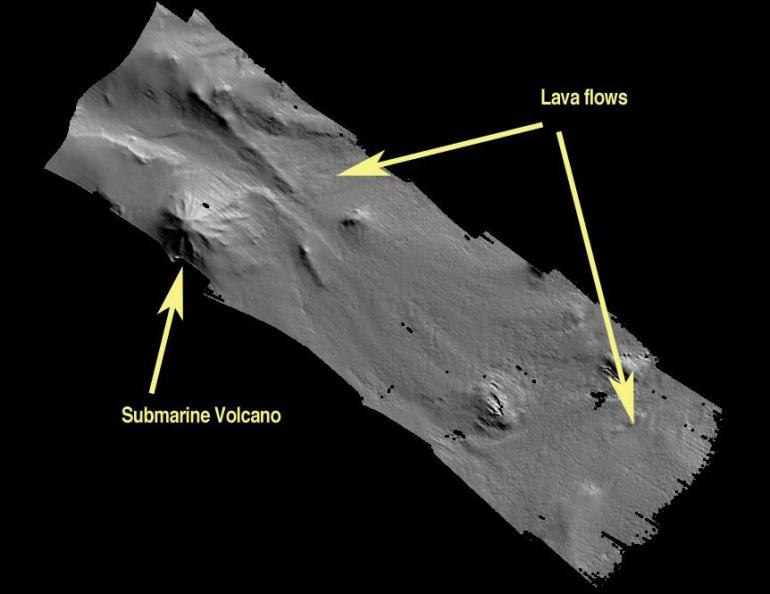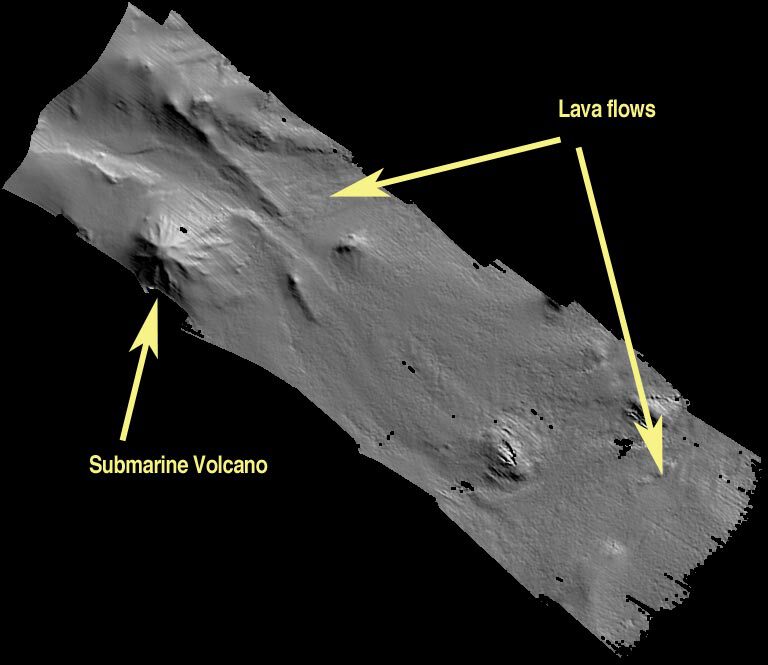
Alaska Volcano Pops to Attention
In the cold waters of the Bering Sea sits a pyramid of volcanic rock that may someday become another Aleutian island.
Jennifer Reynolds of UAF’s
Global Undersea Research Unit, part of the School of Fisheries and Ocean Sciences, recently announced the discovery of an undersea volcano in the Aleutian Islands southeast of Semisopochnoi Island, about 1,300 miles west of Anchorage.As a volcano geologist, Reynolds was intrigued when she heard that biologists exploring the coral community clinging to an underwater pinnacle thought the peak might be a volcano. When Reynolds and others investigated the feature on a scientific cruise in summer 2003, they found a submerged volcano with its summit about 2,000 feet above the surrounding sea floor, which is about the same elevation Ester Dome rises above Fairbanks.
Marine biologists Bob Stone and Jon Heifetz of the National Marine Fisheries Service’s Auke Bay Observatory got a close look at the undersea volcano in 2002. Stone was in a two-man submarine videotaping the rich coral and sponge communities when he noticed the pinnacle had volcano-like features.
“ Even in the sub you could see a conical shape and the underlying black sediment there,” Stone said from his office in Auke Bay.
Armed with this information, Reynolds traveled to the spot while on a 25-day cruise in early summer 2003 to map the sea floor with multi-beam sonar. Watching the high-resolution sonar construct a perfect cone on the computer screen as the ship floated above the volcano, she knew she would soon be searching for a new Alaska place name. She has consulted Native-language experts in the region for an appropriate name for the new feature.
Though an underwater volcano now, the cone was at or near sea level when glaciers locked up much of the world’s water during the last ice age. The volcano has the potential to again grow into an island should it erupt with enough vigor; its summit is about 377 feet below the ocean’s surface.
“It’s close enough to the surface that it can quickly build up to sea level there,” Reynolds said. “There’s no sign that it’s ready to do this, but it’s possible.”
One of Alaska’s newest pieces of land, the volcanic Bogoslof Island in the Aleutians, rose above sea level during explosive eruptions beginning in 1796. Though Bogoslof volcano is much larger than the yet unnamed cone to the west, it posed the same dangers in the days when it lurked below the surface of the Bering Sea.
Besides the hazard of a volcano exploding underneath a ship, undersea volcanoes can release gases that lower the density of seawater to the point that boats can no longer float.
The nameless volcano’s rumbles are remote enough to go undetected today, but geologists at the Alaska Volcano Observatory plan to install a network of seismometers on nearby Semisopochnoi Island in 2005. Those instruments should be close enough to record any earthquakes that would forewarn of an impending eruption.
The vast sea floor surrounding the Aleutians is a world of unmapped canyons, faults, ridges of glacial moraine, and mountains. The nameless volcano probably has brethren in the depths surrounding the Aleutian Islands, Reynolds said.
“This certainly is not the only one, though it may be the largest,” she said. “Whether the next one we find is a well-constructed, long-lived volcano like this is another question.”
In July 2004, Reynolds and a team of other scientists will return to the waters above the volcano with a remote-operated vehicle that will dive to the retrieve rocks and coral from its flanks.




